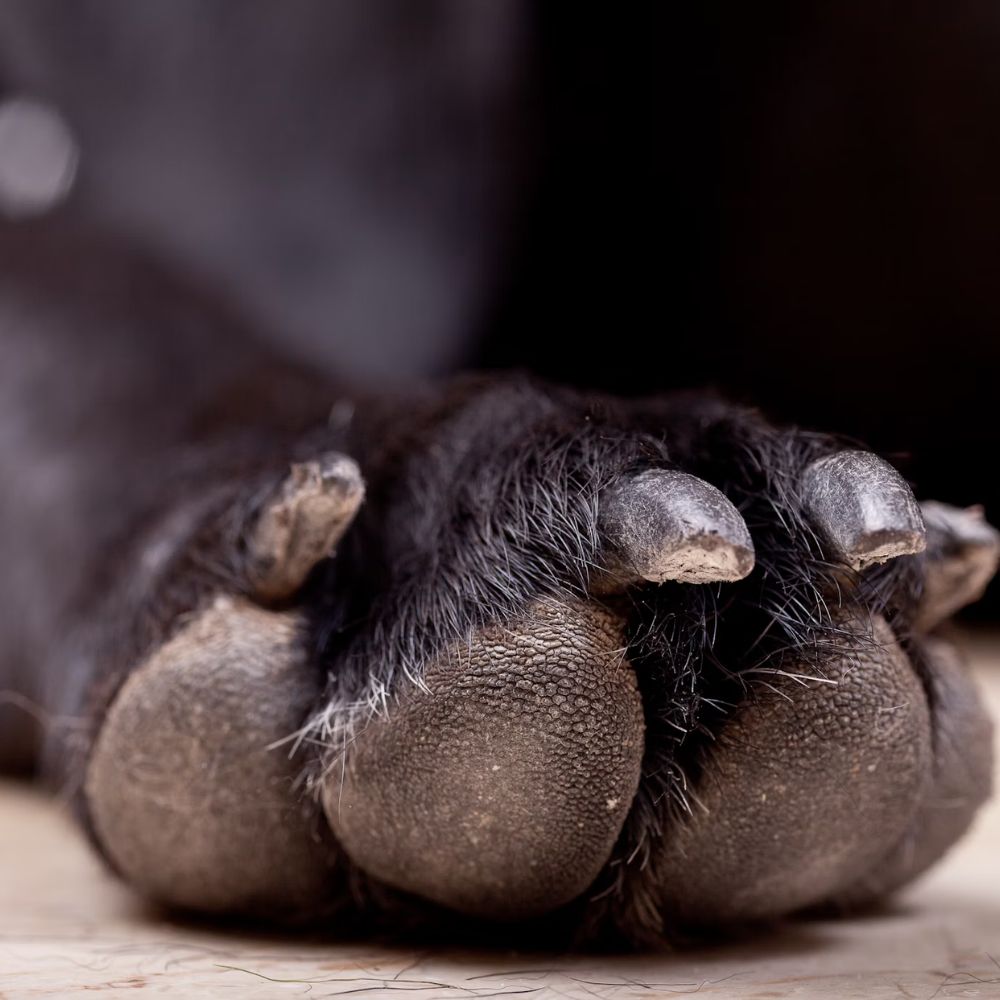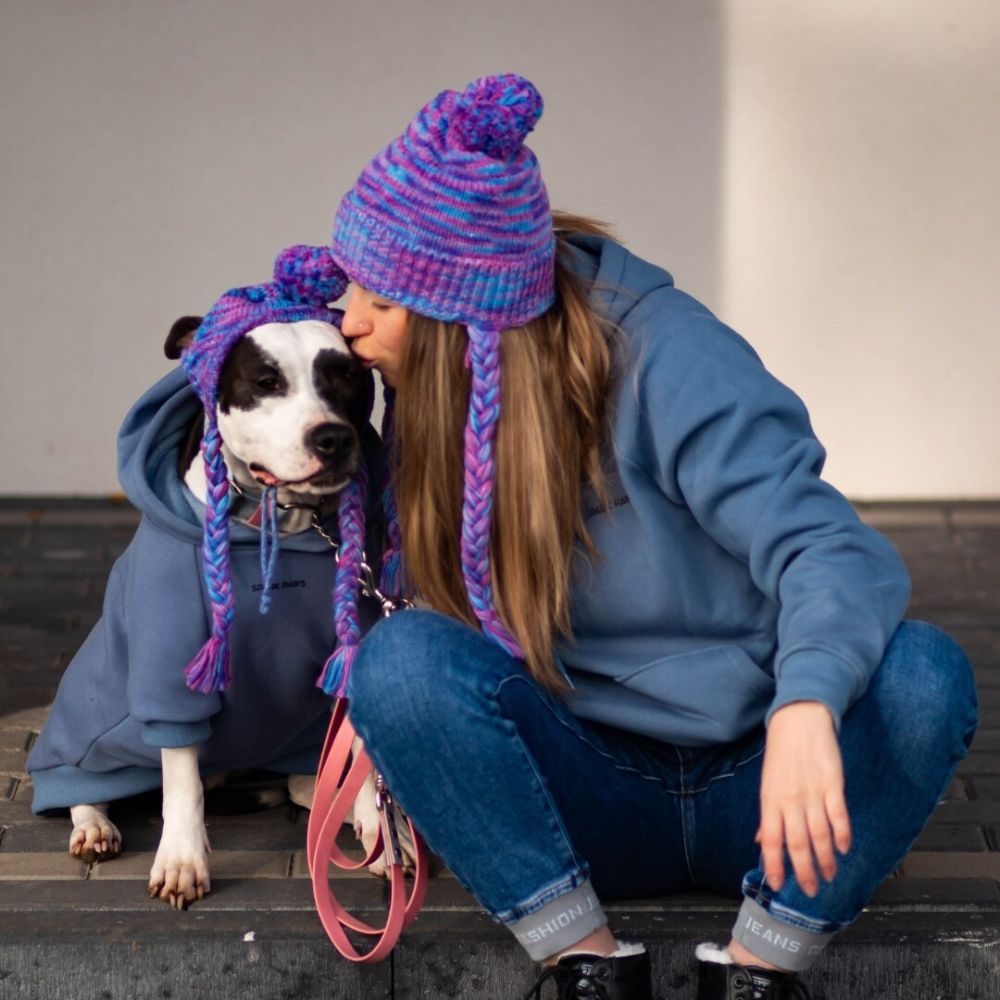All You Need To Know About a Dog Paw Injury
Few things can startle dog owners more than a sudden unexplainable limp! Sometimes the cause for this is obvious, but sometimes there’s no easy explanation. Sometimes your dog can be in pain and not even limping at all.
With something as complex as a dog paw, how do you know what you’re dealing with? And how do you prevent injuries from happening in the first place?

Basic Dog Paw Anatomy
Dog paws are generally considered the very end of their legs. Dog’s feet have four toes on each foot, which are called ‘digits’. Each digit bone is made of phalange bones and is protected by a firm pad - which have been affectionately dubbed ‘toe beans’ by many online animal lovers.
Each toe, on both sets of the dog’s feet, have a non-retractable claw that gives the dog traction and stability when running. Some dogs may have webbing between their toes.
Inside the dog’s paw are four more bones connecting to the ‘wrist’ or ‘ankle’. The bottom of the dog’s paw is protected by a heart-shaped cushion called the paw pad. The paw pad is a tough chunk made up of multiple layers of skin, adipose(fat), and keratin. The paw pad mainly acts as a cushion when running or jumping.
The front paws may have an additional tuft of paw pad higher up their leg to act as a brake pad when skidding about during ‘zoomies’.
Dog’s feet, though usually only on the front legs in most breeds, also have a ‘dewclaw’ which looks like a small fifth digit. This small digit helps dogs to have a better grip when handling something.
Common Symptoms of Dog Paw Injury
Dog paws are pretty tough, and paw pads are designed to take a lot of wear and tear. But they're not infallible, and tumbles, burns, sharp objects, or even rough ground can occasionally cause a lot of damage.
Most significant dog paw injuries would probably be easily noticeable with things such as crying, whining, and limping, as well as obvious signs such as blood. However, more subtle paw injuries can occur as well.
Dr.Ellen Russell, DVM, a graduate of the Virginia-Maryland College of Veterinary Medicine, recounts that not all signs of pain may be obvious.
She recounts that dog paw injury symptoms may include limping (which may be noticeable or subtle, swelling of the paw pad, excessive licking or ‘worrying’ of the paws, redness of the paw pad, cracks or blisters on the paw pad, or an uncharacteristic aggressiveness or resistance to having their paw touched.[2]
Common Types of Dog Paw Injury
Cuts
Cuts and lacerations are some of the most common injuries to a dog’s paws, as well as one of the more common paw pad injuries. Since a dog’s paw pads are underneath their feet, they are the most at risk of being slit by foreign objects such as wires, broken glass, or even winter ice.
Cuts are normally easy to diagnose since they normally result in bleeding of the paw pads or toes.
First aid for cuts normally includes applying pressure with a clean towel or gauze strip and cleaning the wound. For a deep cut, a vet may choose to stitch or staple the wound close and bind up the dog’s paw with a bandage or sock to prevent infection
Foreign Objects Imbedded in Paw Pad
Much like cuts, foreign objects may also get embedded in your dog’s paw. The paw pad is quite thick and tough, making it easy for sharp objects to get stuck. This may be harder to diagnose, since the embedded object may prevent the wound from bleeding.
The most common objects are normally sharp stones, splinters, thorns, burrs, or broken glass…though any object can become lodged in your dog’s paw. So it's good to check your dog’s paws after any outing or long outdoor play session.
Aside from limping, dogs with objects embedded in their paw pads will often lick the paw pad excessively, to the point that it becomes red and swollen. A foreign object may also end up between the toes, in which case the dog may also try to bite at their feet to remove it.
Small objects may be removable at home, but any large or deeply embedded object should be removed under veterinary supervision. Many dogs are also given antibiotics to prevent infection.
Sometimes a foreign object may also be a parasite, such as a tick, which can crawl between the toes, or between the paw pad and the toes, and cause itching and discomfort.

Fractures
Fractures are a relatively uncommon dog paw injury since a dog’s paws are normally quite a shock absorbent. However, trodding hard on your dog’s paw, a run-in with a car, or getting a dog paw caught in a fence can sometimes crack or break the metacarpal bones.
The Animal Surgical Centre of Mighigan describes the symptoms of a fracture as ‘Non-Weight-bearing lameness, swelling, and abnormal movement of the paw (instability)’ but reiterates that a fracture of the dog paw normally requires an X-ray to properly diagnose.[3]
Normally, a fractured dog’s paw will require surgery, as it’s quite a serious dog paw injury. This may mean that a plate or rod may be inserted into the dog’s paw and that they may have to wear a splint or cast for a few weeks.
Broken Toenails
A more common and slightly less serious dog paw injury are broken nails. A nail can be twisted or cracked, but still in the nail bed, or completely missing from the dog’s paw. This is common after a fall or even just landing wrong when slipping or jumping off a bed.
A missing nail will normally be bleeding, and you will probably need to clean and wrap the wound.
However, whether the nail is missing or just torn, you will need to see a vet. If a piece of the nail remains, then it can cause prolonged pain and discomfort, as well as putting your dog’s paw at risk of infection.
It may take a long time for a broken nail to grow back completely, but unless the nail bed is badly damaged it should come back without much issue.
Paw Pad Injuries
Since paw pads take up most of the surface area on dog paws, and are subject to a lot of wear and tear, it's quite likely that your dog may suffer a paw pad injury at some point in its life.
Paw pads are sometimes a good indication of a dog’s overall health, and a bad diet or chronic illness can sometimes show up as discolored, dry, cracked, or ‘ashy’ paw pads.
Burns
Paw pad burns can come from running on very hot ground, chemical irritants (such as Ice-melting chemicals), or from direct sources of heat, such as stepping on a hot coal or being trapped near a fire.
Mild burns can cause the dog to repeatedly lick their paw pads and may result in the paw pads becoming chapped, cracked, or chafed.
More severe paw pad burns can result in blisters, redness, open sores, and ulceration. Even dark-colored paws may turn red and bleed. Your dog’s paw pads may lose the outer protective skin, leaving sensitive raw skin underneath.[4]
Mild burns may be treatable at home by applying dog-safe topical ointment and keeping the paw bound. However, a burn is a serious paw pad injury and could result in infection and scarring if not properly cared for.
You should avoid all rough, hot, or dirty areas while the paw is healing, and try to prevent your dog from licking the paw or gnawing their bandages. Your dog’s paw pads should take around a week to heal from a minor burn, but a serious burn with sloughing can take much longer.
Abrasions
Abrasions are similar to burns. This paw pad injury normally occurs when a dog runs on a rough surface that they’re not used to, such as concrete or a gravel driveway. This may be more common in puppies, whose paw pads haven’t toughened up yet.
This may also result in blistering or open sores and should be treated in a similar way to a dog paw burn.
Allergies
Allergies are not really paw pad injuries, but they can sometimes cause rashes on your dog’s body, and even on your dog’s paw. This can result in excessive licking or biting of the dog paw, which can cause it to dry out and become cracked or raw.
Normally a vet will have to prescribe ointments or medications of some kind, but you can try and prevent contact dermatitis (a rash from touching the allergen) by making your dog wear shoes or boots.
Infections
Dog paw infections occur when a dog paw injury is severe enough that microorganisms can enter the paw and begin to grow.
Dr. JoAnna Pendergrass, DVM, a member of the AMWA, says that some of the most common infections of the paws are normally bacterial, fungal, or yeast infections. Yeast and fungal infections are more common in immuno-compromised dogs, while bacteria are often from trauma or damage.[5]
She goes on to explain that common symptoms often include redness, swelling, pain, a foul smell, discolored nails, discharge from the wound, abscesses, and difficulty walking on the paw.
Treatment for infections will often include an analysis of the infection, topical or oral antibiotics or antifungals, pain medications, and wound care - such as draining abscesses and debriding dead tissues.
Additional care may be needed if the infection is very deep or has spread far, this may even require a stay in the veterinary hospital if the infection has reached the bloodstream.
Preventing Paw Pad Injuries
Avoid Dangerous Surfaces - Avoid surfaces and areas that can damage your dog’s paws such as hot concrete, thorny areas, or surfaces your dog isn’t used to running on.
Check Paws Regularly - Check your dog’s paws regularly. If you are able to catch a problem early then it may save a lot of time, pain, and money down the line.
Prevent Parasites - Make sure all of your tick and flea medication is up to date.
Protect the Paw - Sometimes the best thing to do is to provide the paw with direct protection, such as with a pair of dog shoes. This will prevent burns, nail injuries, and cuts, and may provide more stability for older dogs.
Make sure the Shoes Fit - If you do decide to buy a pair of dog shoes, get a pair that fits your dog well. A loose or ill-fitting pair of shoes may put your dog at risk for injury.
Regular Grooming - Keeping nails trimmed will prevent them from becoming overgrown and dangerous. Trimming long fur around the paw area will also decrease the risk of pests or allergens coming in contact with the paws. Regular grooming will also allow you to check for issues

Conclusion
Dog paw injuries may be obvious, such as with bleeding or limping, or more subtle, such as with a dog licking or worrying at their paws.
Common injuries include cuts, embedded foreign objects, allergies, burns, abrasions, parasites, nail injuries, and infections from microorganisms.
Some of these may be tenable at home, such as cleaning a wound or removing a tick, but in most cases, you should refer to a qualified vet. Since dogs use their feet for grabbing, examining, digging, running, and so on, a bad injury can be quite debilitating for them.
To protect your dog, try and groom their feet regularly, checking often for any changes, sores, or parasites. You can also protect their feet by investing in a good pair of dog boots - which will keep them safe from burns, abrasions, and most sharp objects.
If you are interested in learning more, why not check out Sparkpaws’ Shoe and Boot Collection for a number of colorful options to keep your dog safe and comfortable on their walks.
Ext Links
[1] https://www.greatpetcare.com



